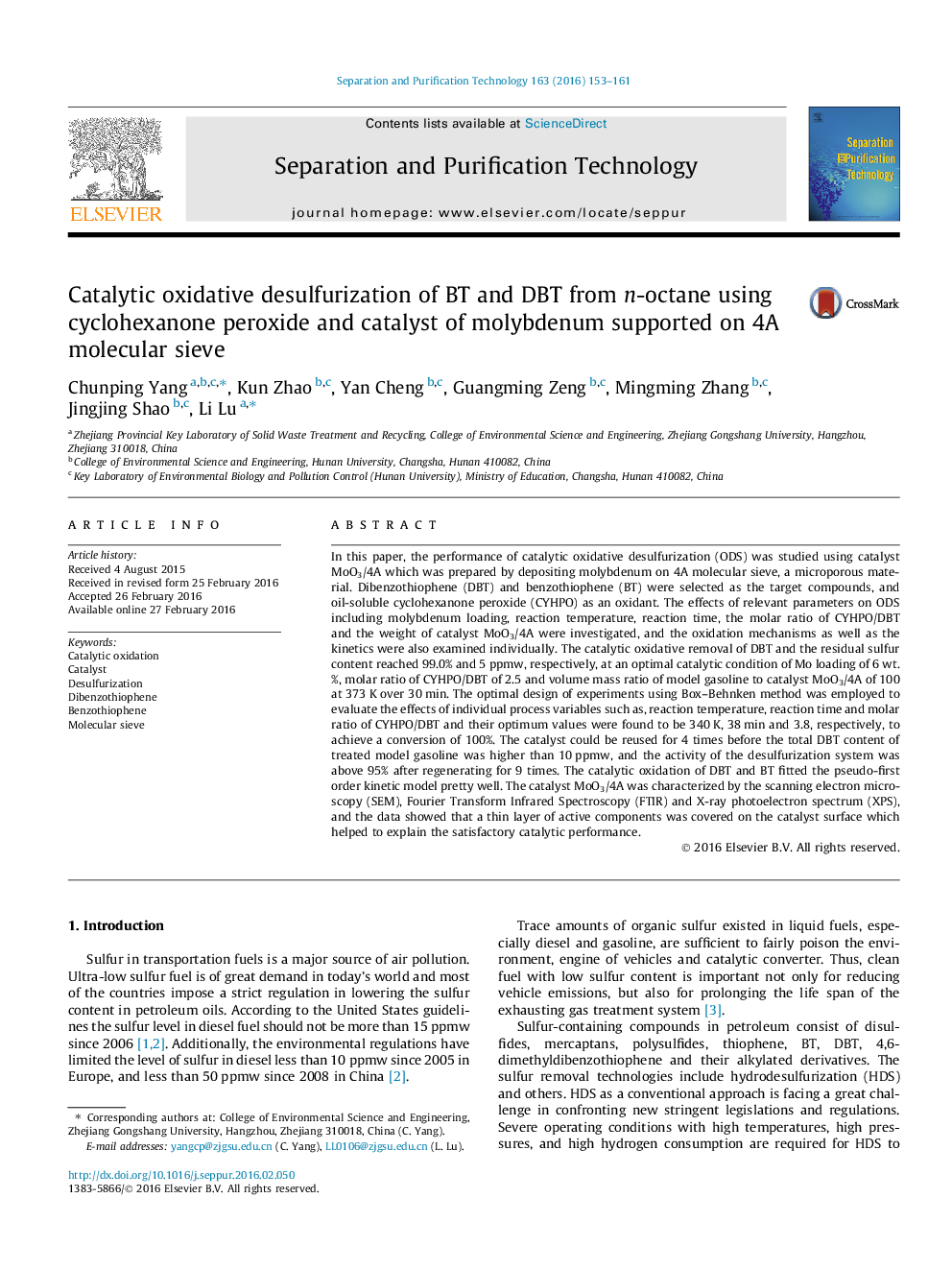| کد مقاله | کد نشریه | سال انتشار | مقاله انگلیسی | نسخه تمام متن |
|---|---|---|---|---|
| 640088 | 1456957 | 2016 | 9 صفحه PDF | دانلود رایگان |

• Catalyst MoO3/4A was prepared and characterized.
• CYHPO was used as the oxidizing agent.
• DBT level in n-octane was reduced from 500 to 5.0 ppmw under optimal conditions.
• The Box–Behnken design was applied to determine optimum DBT conversion.
• Regenerated catalyst MoO3/4A could effectively extract DBT from fresh model gasoline.
In this paper, the performance of catalytic oxidative desulfurization (ODS) was studied using catalyst MoO3/4A which was prepared by depositing molybdenum on 4A molecular sieve, a microporous material. Dibenzothiophene (DBT) and benzothiophene (BT) were selected as the target compounds, and oil-soluble cyclohexanone peroxide (CYHPO) as an oxidant. The effects of relevant parameters on ODS including molybdenum loading, reaction temperature, reaction time, the molar ratio of CYHPO/DBT and the weight of catalyst MoO3/4A were investigated, and the oxidation mechanisms as well as the kinetics were also examined individually. The catalytic oxidative removal of DBT and the residual sulfur content reached 99.0% and 5 ppmw, respectively, at an optimal catalytic condition of Mo loading of 6 wt.%, molar ratio of CYHPO/DBT of 2.5 and volume mass ratio of model gasoline to catalyst MoO3/4A of 100 at 373 K over 30 min. The optimal design of experiments using Box–Behnken method was employed to evaluate the effects of individual process variables such as, reaction temperature, reaction time and molar ratio of CYHPO/DBT and their optimum values were found to be 340 K, 38 min and 3.8, respectively, to achieve a conversion of 100%. The catalyst could be reused for 4 times before the total DBT content of treated model gasoline was higher than 10 ppmw, and the activity of the desulfurization system was above 95% after regenerating for 9 times. The catalytic oxidation of DBT and BT fitted the pseudo-first order kinetic model pretty well. The catalyst MoO3/4A was characterized by the scanning electron microscopy (SEM), Fourier Transform Infrared Spectroscopy (FTIR) and X-ray photoelectron spectrum (XPS), and the data showed that a thin layer of active components was covered on the catalyst surface which helped to explain the satisfactory catalytic performance.
Journal: Separation and Purification Technology - Volume 163, 11 May 2016, Pages 153–161